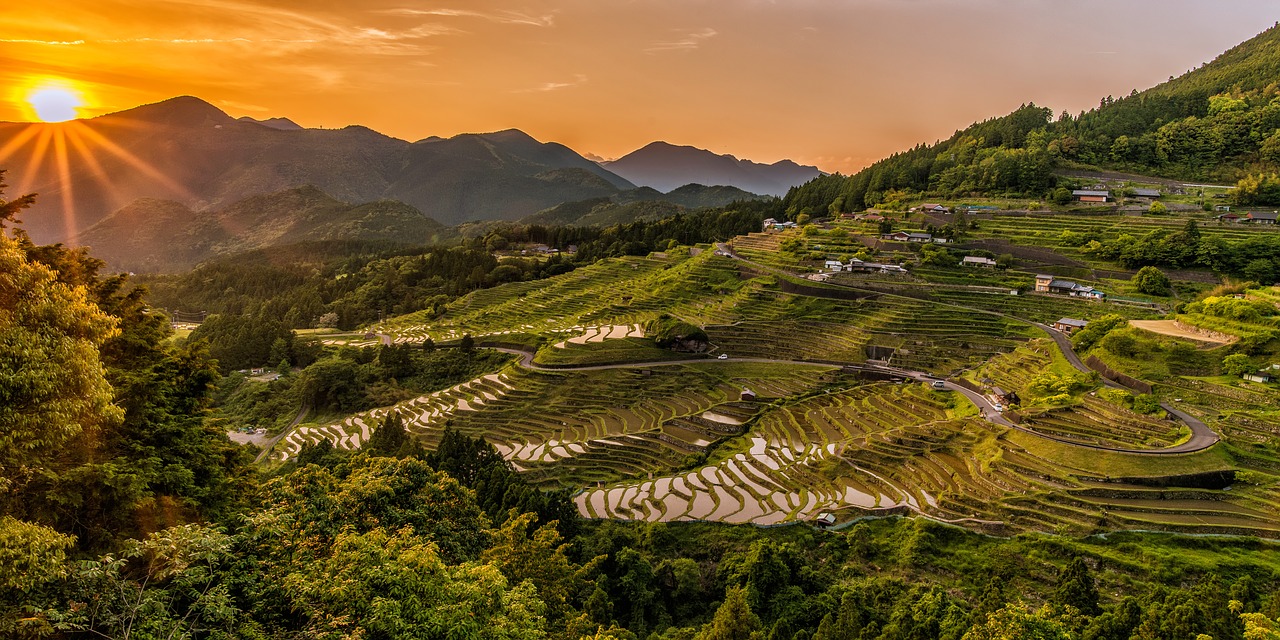AP Environmental Science ♻️
252 resourcesSee Units
Multiple Choice Practice for Land and Water Use
Welcome to Unit 5 AP Environmental Science Multiple Choice Questions! Grab some paper and a pencil 📄 to record your answers as you go. You can see how you did on the Unit 5 Practice Questions Answers and Review sheet once you're done. Don't worry, we have tons of resources available if you get stumped 😕 on a question. And if solo study is not your thing, join a group in Hours!
Not ready to take a quiz yet? Start studying unit 5 Here: Intro to Unit 5

Image from Pixabay
Humans have drastically altered much of Earth's surface to cultivate crops.
Facts about the test: The AP Environmental Science exam has 80 multiple choice questions and you will be given 1 hour 30 minutes to complete the section. That means it should take you around 17 minutes to complete 15 questions.
*The following questions were not written by CollegeBoard and although they cover information outlined in the AP Environmental Science Course and Exam Description the formatting on the exam may be different.
1. Citizens notice that people who bring their dogs to the park often do not clean up after them however, everyone would prefer if the field was free of dog waste. What is one viable method to protect this commons?
A. Put up a fence so that dogs and people can not go in the field.
B. Issue fines to people who do not clean up after their dogs.
C. Develop the field into a parking lot.
D. Allow only some people to use the field.
2. Which of the following is not a potential environmental hazard of clearcutting?
A. Loss of only large mature trees
B. Soil erosion
C. Loss of habitat
D. Water pollution from sedimentation
3. Which of the following was not a contributing factor to the green revolution?
A. Mechanization of farm tools
B. Large scale monocrops
C. Development of GMOs
D. Small family farms
4. Loss of biodiversity due to monocropping tends to lead to
A. organisms quickly evolve to live in a different ecosystem.
B. the extinction of specialist species in that area.
C. r-selected, invasive species establishing a population.
D. a loss of the genetic diversity of the plant that is being farmed.
5. DDT was found to be linked to the declining bald eagle population for which of the following reasons?
A. Eagles in areas with DDT died from habitat destruction from DDT poisoning.
B. Eagles that consumed fish with DDT in their system died from exposure to toxins.
C. Eagles exposed to DDT had soft eggs that did not hatch.
D. Eagles that lived in areas with DDT use did not have adequate food supplies due to the crash in the food chain.
6. How much more land would it take to generate the same amount of calories from meat as it would from plants?
A. 5 times more land
B. 20 times more land
C. 50 times more land
D. 100 times more land
7. When land is overgrazed to the point that the majority of plants do not come back, this is known as
A. Clearcutting
B. Desertification
C. Free Range grazing
D. Concentrated Animal Feeding Operation
8. The process by which a boat drags a net on the bottom of the ocean to catch fish is called
A. Skimming
B. Dip Net fishing
C. Longline fishing
D. Trawling
9. Fracking is the
A. removal of natural gasses from the Earth.
B. practice of farming mollusks in the ocean.
C. fracturing of metal ore to mine for copper.
D. process of digging into and mixing up the topsoil for the next crop to be planted.
10. Large areas of impermeable surfaces in cities often result in _____ daytime temperatures.
A. fluctuating
B. constant
C. higher
D. lower
11. According to the Global Footprint Network which of the following has the LARGEST ecological footprint per person?
A. U.S.A
B. China
C. Ethiopia
D. Brazil
12. According to the Global Footprint Network which of the following has the SMALLEST ecological footprint per person?
A. U.S.A
B. China
C. Ethiopia
D. Brazil
13. Sustainable agriculture uses which of the following?
A. RFT
B. DDT
C. CAFOs
D. IPM
14. Farming of oysters can lead to
A. the cleaning of natural waterways.
B. increased methane production.
C. pesticide resistance in natural populations.
D. desertification due to overuse of natural algae.
15. A deadzone is
A. an area in water that no longer has and fish due to overfishing.
B. an area on land that no longer has any animals due to over-harvesting.
C. an area on land that has been over grazed and turned into a desert.
D. an area in water with a lack of life due to hypoxic conditions.
Browse Study Guides By Unit
🏜Unit 1 – The Living World: Ecosystems
🐠Unit 2 – The Living World: Biodiversity
👪Unit 3 – Populations
🌏Unit 4 – Earth Systems & Resources
🏖Unit 5 – Land & Water Use
⚡️Unit 6 – Energy Resources & Consumption
💨Unit 7 – Atmospheric Pollution
♻️Unit 8 – Aquatic & Terrestrial Pollution
🔥Unit 9 – Global Change
🧐Multiple Choice Questions (MCQs)
✍️Free Response Questions (FRQs)
📆Big Reviews: Finals & Exam Prep

Fiveable
Resources
© 2023 Fiveable Inc. All rights reserved.